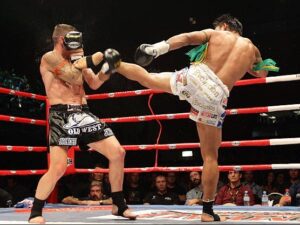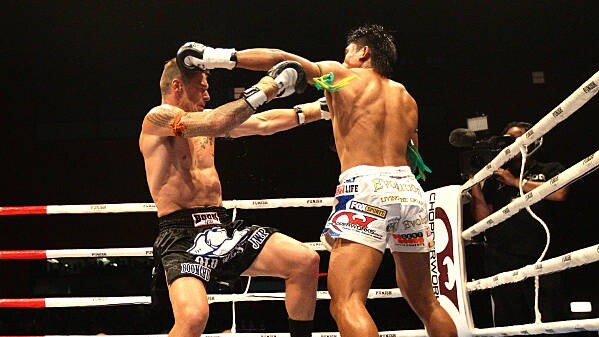The Eight Limbs of Muay Thai: A Comprehensive Guide to Striking and Blocking
Muay Thai, often referred to as “The Art of Eight Limbs,” is a combat sport that utilizes eight points of contact to strike an opponent. These points include the hands, elbows, knees, and feet, each offering a unique method of attack. In this article, we will delve into the various striking techniques and blocks used in Muay Thai, providing a detailed overview of how each limb can be weaponized in the ring.
1) Hand Strikes
Hand strikes in Muay Thai bear a strong resemblance to boxing punches, given that both sports employ gloves. However, Muay Thai distinguishes itself by incorporating the back fist as an additional striking option. Here are some of the common punches used in Muay Thai:
a) Jab
A quick, straight punch thrown with the lead hand.
b) Hook
A punch executed in a semi-circular motion aimed at the side of the opponent’s head.
c) Uppercut
A punch delivered with an upward motion targeting the opponent’s chin.
d) Overhand Punch
A powerful, looping punch coming from above.
e) Back Fist
A strike where the back of the fist is whipped towards the target.
f) Straight Punch
A direct punch aimed at the opponent’s head or body.
g) Swing
A wide, powerful punch aimed at the opponent’s head or body.
2) Elbow Strikes
Elbow strikes in Muay Thai are highly effective when the opponent is within close range, targeting areas such as the face, jaw, and neck. The following elbow strikes are commonly used in Muay Thai:
a) Slashing Elbow
A horizontal strike with the elbow.
b) Uppercut Elbow
An upward elbow strike aimed at the opponent’s chin.
c) Horizontal Elbow
A side-to-side elbow strike.
d) Diagonal Elbow
An elbow strike delivered at an angle.
e) Smash Downward Elbow
A downward strike with the elbow.
g) Chopping Elbow
A downward diagonal elbow strike.
h) Spinning Elbow
An elbow strike delivered by spinning the body.
3) Knee Strikes
Knee strikes are another close-range weapon in Muay Thai, requiring good balance and precision. While knee strikes can weaken defenses and leave you vulnerable to counterattacks, they are devastating when executed correctly. Some effective knee strikes include:
a) Straight Knee
A direct knee thrust to the opponent’s midsection.
b) Horizontal Knee
A knee strike delivered from the side.
c) Jumping Knee
A knee strike executed while jumping towards the opponent.
d) Diagonal Knee
A knee strike delivered at an angle.
e) Curving Knee
A curved knee strike targeting the opponent’s ribs.
f) Farewell Knee
A parting knee strike, often used as a counterattack.
4) Kicks
Kicks are considered the most powerful strikes in Muay Thai, capable of incapacitating an opponent with a single blow. The most common kicks include:
a) Roundhouse Kick
A powerful, circular kick aimed at the opponent’s body or head.
b) Side Kick
A direct kick delivered with the heel.
c) Frontal Kick
A straight kick aimed at the opponent’s midsection.
d) Inside Kick
A kick targeting the inner thigh of the opponent.
e) Outside Kick
A kick targeting the outer thigh of the opponent.
f) Down Round Kick
A downward, circular kick aimed at the opponent’s head or body.
g) Back Kick
A backward kick aimed at the opponent.
5) Blocking Techniques

In Muay Thai, a strong defense is as crucial as a formidable offense. Effective blocking not only neutralizes an opponent’s attack but also sets up counter-striking opportunities. Here are some basic blocking techniques used in Muay Thai:
a) 45 Degree Hand Block
A block where the hand is angled at 45 degrees to deflect strikes.
b) Knee Block
A block using the knee to stop kicks.
c) The Four Block
A versatile blocking technique covering various angles of attack.
Muay Thai’s diverse array of striking and blocking techniques makes it a versatile and effective martial art. Mastering the use of all eight limbs can provide fighters with a significant advantage, allowing them to strike with power and precision while maintaining a solid defense.xt

